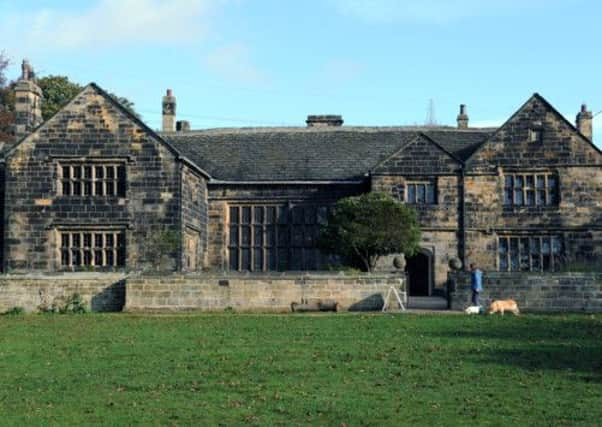History house prompted burst of energy


Duncan became interested in making and saving energy during his six years as facilities manager at Oakwell Hall Country Park, Birstall. As well as 110 acres of parkland, a cluster of visitors’ centres, a performance venue and a shop, he was responsible for the Grade I listed Elizabethan mansion that gives the park its name.
Cutting heating bills and improving the fabric of the buildings on the Oakwell estate, which belongs to Kirklees Council, was a case of needs must.
Advertisement
Hide AdAdvertisement
Hide AdDuncan remembers: “We had to balance a reduced budget with quality and sustainability. It was here that I learnt the specifics of historic building management and restoration along with, as fuel prices started to rise, building energy management. It was a good grounding.”
Duncan went on to establish his current venture, Environmental, which specialises in energy saving and renewables installation and consultancy, in 2005. He says the energy efficiency sector has proved competitive, and at times unstable.
“A lot of our business is back warranty work,” says Duncan. “Insurance companies are calling me up to sort out problems with systems installed by companies which insured their work, but have since gone bust.”
Many such firms suffered when, at the end of 2011, the Department of Energy and Climate Change cut the Feed In Tariff, the payment homeowners and businesses receive for generating renewable electricity, from 43p to 21p per kilowatt.
Advertisement
Hide AdAdvertisement
Hide Ad“The government did the right thing, just at the wrong time,” Duncan says. “Making it financially worthwhile for early adopters of solar panels stimulated demand and reduced the manufacture and installation price, but as lower prices led to it becoming an even better investment, it spiralled out of control.
“The government should have applied the brakes slowly, as had been planned, but they left it too late, panicked, and left a trail of devastation. Companies had to do panic installations, literally throwing panels on roofs before the tariffs changed. Some companies went bankrupt due to reduced demand. The whole renewable industry’s reputation was left in tatters.”
A second reduction in the tariff last August finished off more businesses, including high profile firms like Ploughcroft Business Services, run by Chris Hopkins, a Brighouse entrepreneur who won £120,000 on BBC’s Dragon’s Den programme, and who sat on the Government’s Green Construction Board.
The industry now faces uncertainty again, as it waits to discover the extent of support for homeowners who install biomass boilers, ground source heat pumps and solar thermal systems. Details of the Renewable Heat Incentive are expected in spring.
Advertisement
Hide AdAdvertisement
Hide Ad“It usually costs between £5,000 and £6,000 to install a heat pump or a biomass boiler,” Duncan explains. “Typically that could be paid off within five to seven years. With the RHI this payback period will be considerably quicker.
“We can project what fuel bills will look like with and without the technology, and put that on a graph so it’s easy to understand. If the government told us what RHI tariff they will pay we could also show how the tariffs could make it more affordable.
“For now, if someone has a dodgy boiler I’m advising they wait until spring when hopefully we’ll be told what’s happening.”
A recent Environmental installation at a farm office in Slaithwaite helped cut heating bills by half. “They had a massive oil tank, and because it was commercial it had to be inspected regularly, at a cost of about £900 a year,” says Duncan.
Advertisement
Hide AdAdvertisement
Hide AdThe solution was an air source heat pump. To work efficiently, heat pumps need a well insulated building, but this property was losing heat into a storeroom and through an outside door. Sealing off the storeroom, building a porch and adding insulation ensured the property was suitable. The total cost was around £6,000.